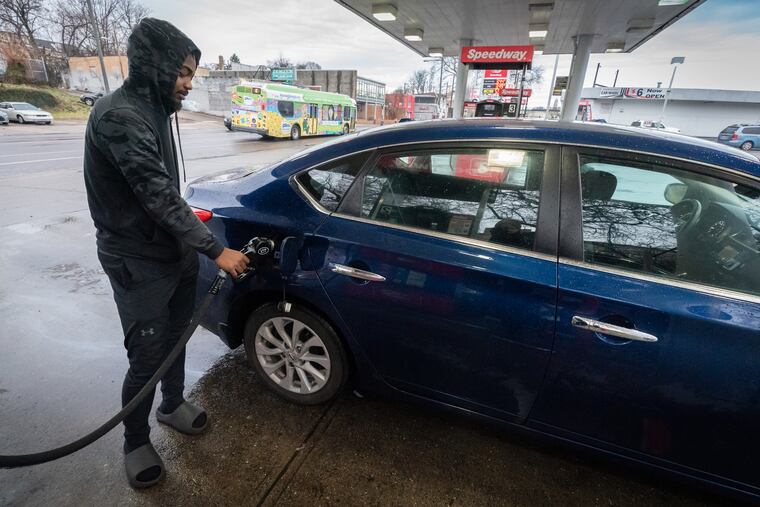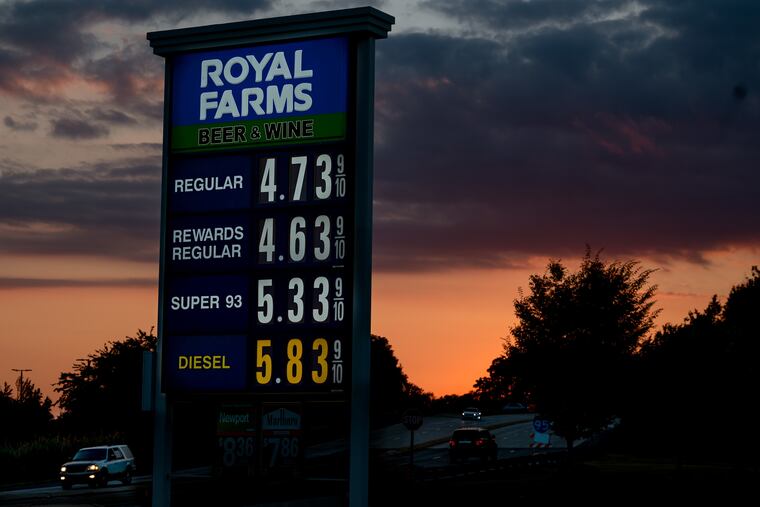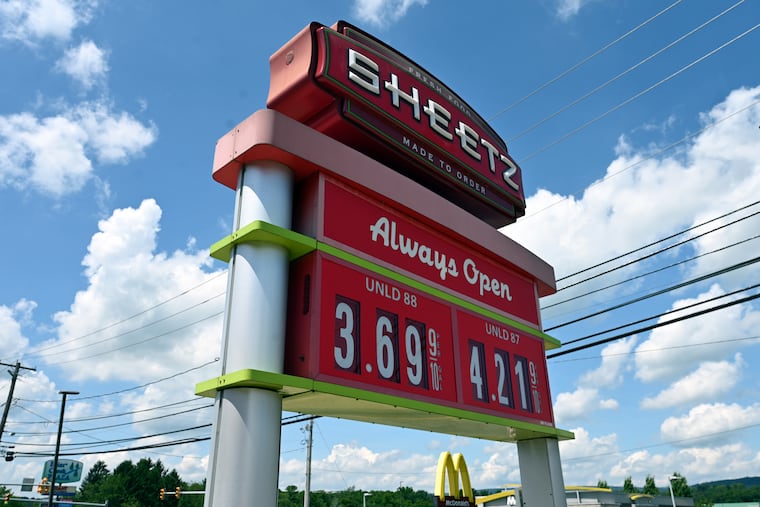If all goes to plan, Philly gas prices won’t reach $4 per gallon for the rest of 2023
There shouldn’t be a repeat of 2022′s nearly $5 per gallon, said experts, with prices staying consistent until at least early 2024.

Philadelphians remember last year’s summer when gas prices rose to the highest in recorded history, with a gallon of gas costing more than $5 in June 2022.
“We broke the all-time record high, which was set back in 2008. We didn’t just break it — we shattered it,” said Jana Tidwell, public and government affairs manager for the American Automobile Association (AAA) Mid-Atlantic
This was a trend seen throughout the U.S., where one out of every five gas stations was charging more than $5 per gallon in the summer of 2022, according to a CNN analysis. Now, one year later, gas prices have been able to stabilize from global supply lines being disrupted due to Russia (the second-largest global oil exporter) invading Ukraine and from the initial setbacks to international oil production and supply chains from the coronavirus pandemic, according to experts who spoke with The Inquirer.
What Americans and Philadelphians see now are fuel price signs hovering around $3.50 per gallon nationally, and around $3.70 per gallon in Philadelphia County, according to AAA. But what about the rest of the year?
Gas prices broke records in 2022
Even before last year’s spike, in 2021, prices started to climb over $3 per gallon for the first time in seven years. Partially due to the pandemic disrupting supply chains which led to oil refineries — a crucial component of making gasoline — directly closing or reducing their production capacity, said Jeff Barron, an industry economist at the U.S. Department of Energy.
“That affected the ability of refiners to really ramp up production and meet the demand as we were reemerging from the pandemic in 2021,” said Barron. “Then in 2022, with the Russian invasion of Ukraine, although it didn’t directly take a lot of barrels of crude oil off the market, it did lead to a lengthening of the supply chain, which adds to the cost.”
According to Barron, the cost of crude oil (or petroleum) is the most influential factor in the price of consumer gasoline, as crude oil prices account for up to 60% of the retail price of gas that drivers see at fuel pumps. During the initial disruption to the global supply chain from Western countries sanctioning and banning Russian oil in early 2022, the price of crude oil skyrocketed.
This is when consumer gas prices rose by nearly 50% in the U.S. for the first half of the year, according to the U.S. Bureau of Transportation Statistics, and Philadelphians saw the average gas price rise to a record-breaking $5.12 per gallon in June 2022.

What are the gas price trends of 2023?
Being a year out from last summer’s gas and oil price hikes has allowed the global supply chain to stabilize. Factors like Russia finding new customers to export oil to places like China, India and South America, while the U.S. increases its oil production capacity, has brought U.S. gas prices to their early 2010s levels, according to Barron.
“When you adjust prices for inflation, current prices are higher than, let’s say, pre-pandemic years of 2016 through 2019, but are probably about on par with the early part of the decade, 2011 and 2012, back when crude oil prices were all about over $100 per barrel, and gasoline was in the $3.50 range,” Barron said.
Since last July, when the price of crude oil dropped below $100 per barrel for the first time in months, there has been a downward trend in prices til now, where its sits at around $80 per barrel at the time of publishing. This has brought down the cost of retail gas too, said Tidwell, and as the seasonal demand for gas decreases with fall and winter months approaching, gas prices should too.
“In a typical year, we usually see the price of gasoline peak leading up to Memorial Day, and right now, gas prices have been holding relatively steady through the summer,” said Tidwell. “Prices will decrease when you see demand taper off as people go back to school and work. But again, there are so many factors depending on what happens with Russia and Ukraine and hurricane season, which we’ll see a spike in gas prices if we have any sort of interruption in refining production and distribution of crude oil.”

Tidwell and Barron say hurricane season from June through November can lead to significant disruptions in the U.S. Gulf Coast, where nearly half of all U.S. oil refining capacity is located.
As many factors point out, gasoline prices are very volatile, making predicting future gas prices nearly impossible, say experts. However, crude oil prices and oil refining capacity can shed some light.
According to the Energy Information Administration’s (EIA) recent forecasts, crude oil will actually increase in price throughout the rest of the year. Barron, who works on these reports for the EIA, says while oil prices may increase due to the ramped-up oil refining and distribution capacity in the U.S. and across the world, the cost of refining and distributing gasoline to consumers will stay consistent.
“As we head into the fall and into the winter, there’s also the seasonal component that will bring down gasoline prices even into early 2024,” said Barron. “We expect next summer’s prices to be lower too, as much 10 or 15 cents per gallon compared to where they have been recently.”
As long as Atlantic Hurricane Season and global supply chains leave oil refining uninterrupted, Philadelphians shouldn’t have to worry about gas prices until next year.
